G.W. Thomas on Science Fiction of the 30s by Damon Knight
Conan the Barbarian: Archie Style! From Everything Archie
#111 (May 1984). Art by Stan Goldberg and Larry Lapick.
G.W. Thomas has gradually become my favorite genre blogger. Not just because of his constant stream of content — he posts every two days at Dark Worlds Quarterly, and has been doing so for nearly a decade — but because of his endlessly zany topics. In the past few months he’s covered Haunted Houses in 50s comics, the Top Ten Ghostbreakers from Weird Tales, Werewolves of EC Comics, Space Heroes of the Golden Age, Fearless Vampire Killers of the pulps, Top Ten Fantasy Fight Scenes from 1980-1985 sword & sorcery flicks, Plant Monsters, Conan in Archie Comics, and so, so much more. For pulp and comic enthusiasts of a Certain Age, G.W. has tapped a nostalgic mother lode.
He also delves pretty deep into more serious topics of real interest, like that time he wrote a one-sentence review of every story in Damon Knight’s classic anthology Science Fiction of the 30s, complete with the original pulp illustrations.
[Click the images for versions from the 30s]
Science Fiction of the 30s (Bobbs-Merrill Company,
January 1976). Cover by Howard V. Brown
As Gary notes in his introduction, there were no science fiction anthologies in the 30s. The first true SF anthology was Donald A. Wollheim’s The Pocket Book of Science-Fiction in 1943 (not Healy and McComas’s 1946 Adventures in Time and Space, as Gary erroneously cites), and by the time SF anthologies became commonplace they generally neglected the SF of the 30s in favor of the more popular fiction of John W. Campbell’s “Golden Age,” which began roughly in 1939 with the arrival of Robert A. Heinlein, Isaac Asimov, and the Astounding stable of writers.
But there are a few of us who prefer the pulpier fiction of the Clayton Astounding, and Gary is one.
I am an Edmond Hamilton, Leigh Brackett, early Jack Williamson and Clifford D. Simak guy. I still like that “wonder” stuff that I think Campbell replaced with information and mathematics. To be perfectly honest, many of my favorite SF pieces didn’t appear in Astounding at all. Weird Tales, Planet Tales and Thrilling Wonder. In a word, the 1930s stuff. (Sticklers are going to point out that Planet Stories started in 1939 and is really a 1940s and 1950s mag. Yes, but in spirit, 1930s.)
So there are my prejudices. I like the old, old stuff. And the people to blame for that are actually two men who weren’t fans of 1930s Pulp. They grew up on it, which is why they did their anthologies, but one is a Golden Ager, and the other, a Futurian. Isaac Asimov and Damon Knight were the men who introduced me to the Science Fiction I adore.
Like Gary, I was introduced to the pulp SF of the 30s by Isaac Asimov’s glorious anthology Before the Golden Age (1974), and immediately began looking for similar volumes. There are a few, like the three-volume Amazing anthos published by TSR in the late 80s, but the only one that really compares to Asimov’s is Damon Knight’s Science Fiction of the 30s.
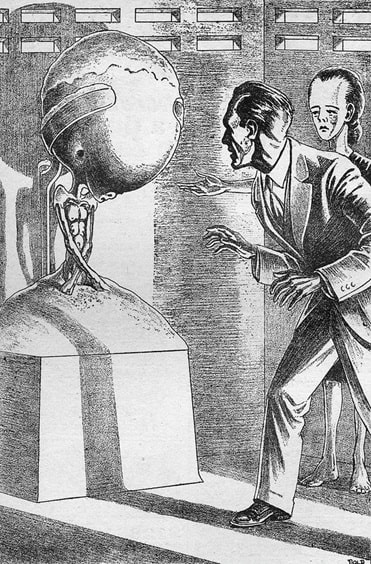 |
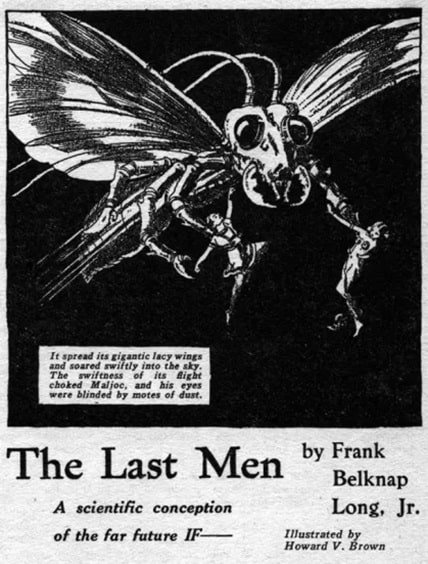 |
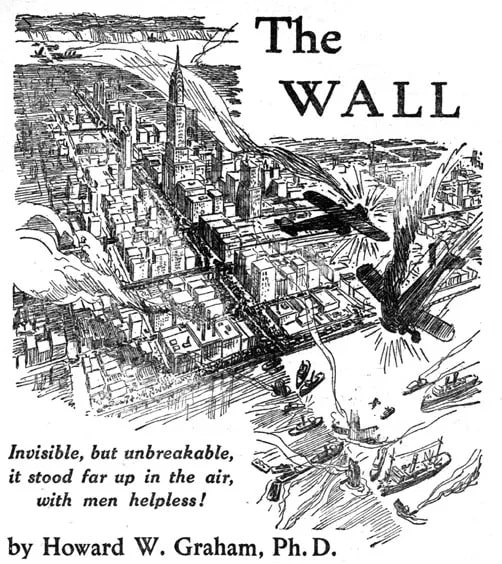 |
Art for Harry Bates’s “Alas, All Thinking” by Elliott Dold, Jr, Frank Belknap Long’s
“The Last Men” by Howard V. Brown, and Howard W. Graham’s “The Wall” by Paul Orban
Gary reviews each of the tales within in just a few sentences. Here’s a few examples.
“Out Around Rigel” (Astounding Stories, December 1931) by Robert H. Wilson. This love triangle story has a great action scene at the end with the two rivals fighting the aliens.
“The Lost Language” (Amazing Stories, January 1934) by David H. Keller, M.D. Keller always fascinates me because he wrote his own thing, some of it based on his work as a shrink.
“Pithecanthropus Rejectus” (Astounding Stories, January 1938) by Manly Wade Wellman. This story is an interesting footnote in SF history. Lester Del Rey hated it so much he wrote his first story in reply. More here.
“The Day Is Done” (Astounding Science-Fiction, May 1939) by Lester del Rey. This is a wonderful story about how the Neanderthals were replaced by modern humans. Clan of the Cave does the same thing but is much longer.
“Alas, All Thinking! ” (Astounding Stories, June 1935) by Harry Bates. This is one of two classics Bates wrote after he left editing. The other is, of course, “Farewell to the Master.”
Art for Raymond Z. Gallun’s “Davy Jones’ Ambassador” uncredited
“Davey Jones’ Ambassador” (Astounding Stories, December 1935) by Raymond Z. Gallun. I love that illo. I always thought it was H. W. Wesso, but I could be wrong. It’s a good story, too, with an idea that would be used several times after, including The Abyss (1989). Gallun’s ocean dwellers are not so nice.
“The Mad Moon” (Astounding Stories, December 1935) by Stanley G. Weinbaum. Weinbaum will be famous forever for “A Martian Odyssey” but I like “The Mad Moon” better. He had had more practice with the alien travelogue by this time.
Art for Stanley G. Weinbaum’s “The Mad Moon” by Thompson
“The Fifth-Dimension Catapult” (Astounding Stories of Super-Science, January 1931) by Murray Leinster. Leinster predates the 1930s with SF in Argosy. This one reminds me of Ray Cummings’ The Girl in the Golden Atom (1920).
“The Wall” (Astounding Stories, May 1934) by Howard Wandrei. Howard was Donald Wandrei’s brother. He wrote most of his stuff under pseudonyms. He was another artist turned writer.
“The Last Men” (Astounding Stories, August 1934) by Frank Belknap Long Jr. This story was the first in a trilogy of tales about humanity in the far future. Most people associate Long with H. P. Lovecraft and the Cthulhu Mythos but FBL wrote plenty of SF too.
Art for Murray Leinster’s “The Fifth-Dimension Catapult” by H. W. Wesso
I first read Murray Leinster’s “The Fifth-Dimension Catapult” in Science Fiction of the 30s, and I loved it so much I reprinted it in Black Gate 9. I had planned to reprint the sequel, “The Fifth-Dimension Tube,” in Black Gate 16 (and Steven H Silver had even scanned the entire story for us), but tragically Black Gate folded with issue 15.
Gary wraps up his article as follows.
Knight’s picks tell us a lot. Asimov’s Before the Golden Age is dominated by Hugo Gernsback and Wonder Tales. Knight splits his focus between T. O’Conor Sloane’s Amazing Stories and the three versions of Astounding. Despite being a 1930s collection there is still plenty of John W. Campbell and his Golden Age writers here. Knight isn’t attempting to show all the magazines of the time (No Weird Tales, which is a little disloyal since Knight drew illustrations for that magazine.) His position is to state there were good stories before 1940, and here they are.
While selecting familiar writers like L. Sprague de Camp, Murray Leinster, Eric Frank Russell, Stanley G. Weinbaum, he also includes some very obscure Pulpsters like Robert H. Wilson, Frank K. Kelly, William K. Sonnemann, A. Macfadyen, Jr, and Howard Wandrei under a pseudonym. Two of the editors, John W. Campbell and Harry Bates, also show up. An early one for Campbell and a late one for Bates. In between the famous Golden Agers and the obscure, are work horses like David H. Keller, Manly Wade Wellman and Frank Belknap Long (all Weird Tales authors and my favorites in this book.)
When I read this book (and re-read it over and over), it was a time when these stories were locked away from most of us. Collectors had the old Pulps but no one else. I had no chance of seeing the originals in any form. Fortunately, we live in a much different time now. All these issues are available for free in digital scans. It is now quite possible, and still desirable, to read these stories in their Pulp format. My sincerest thanks to all the great scanners at PulpScan and other groups who have taken the time to free these old tales from their dusty mylar bags.
Read the entire article here, and don’t forget to sample Gary’s semi-daily (and highly entertaining) blog at Dark Worlds Quarterly.
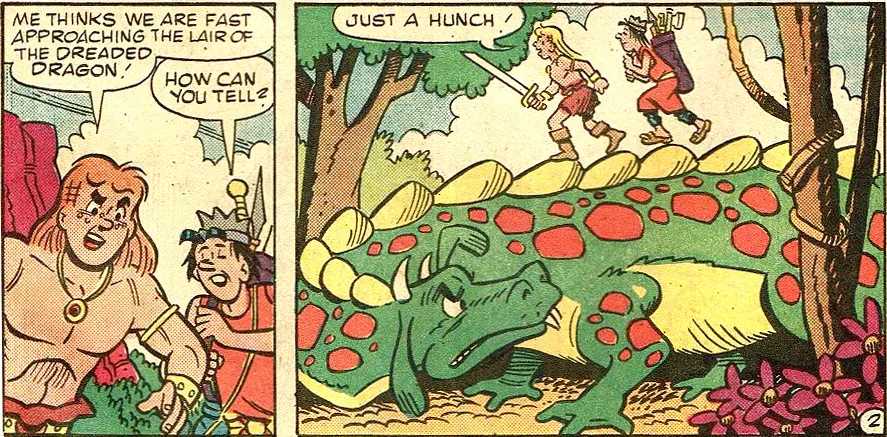
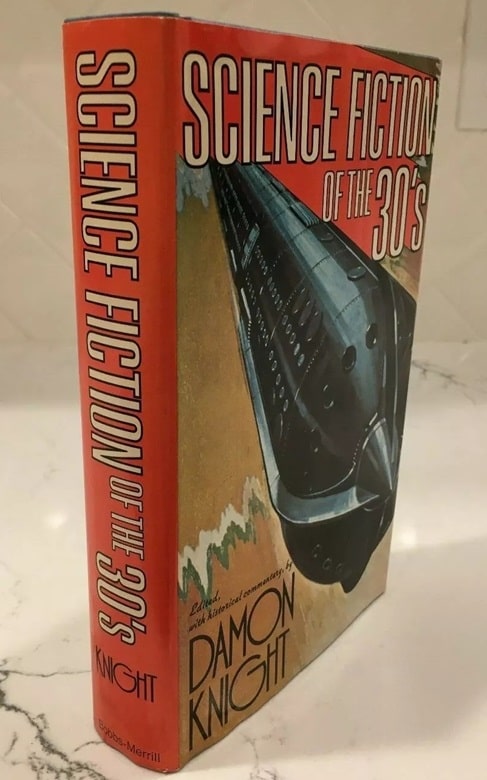
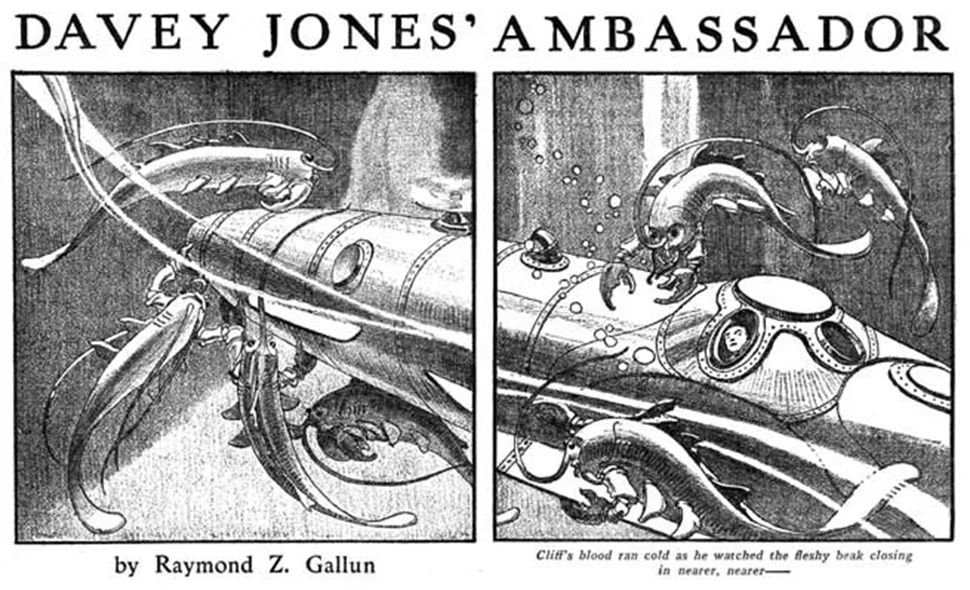
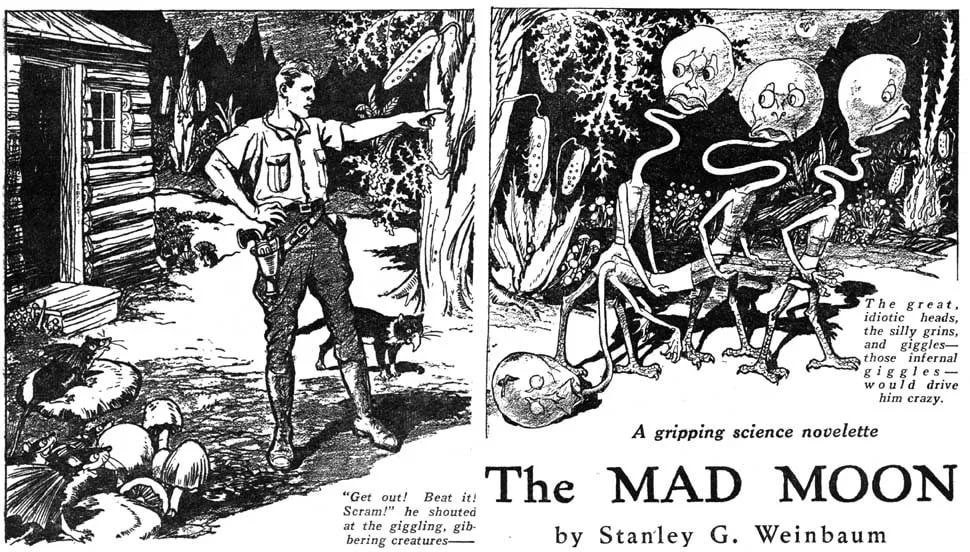
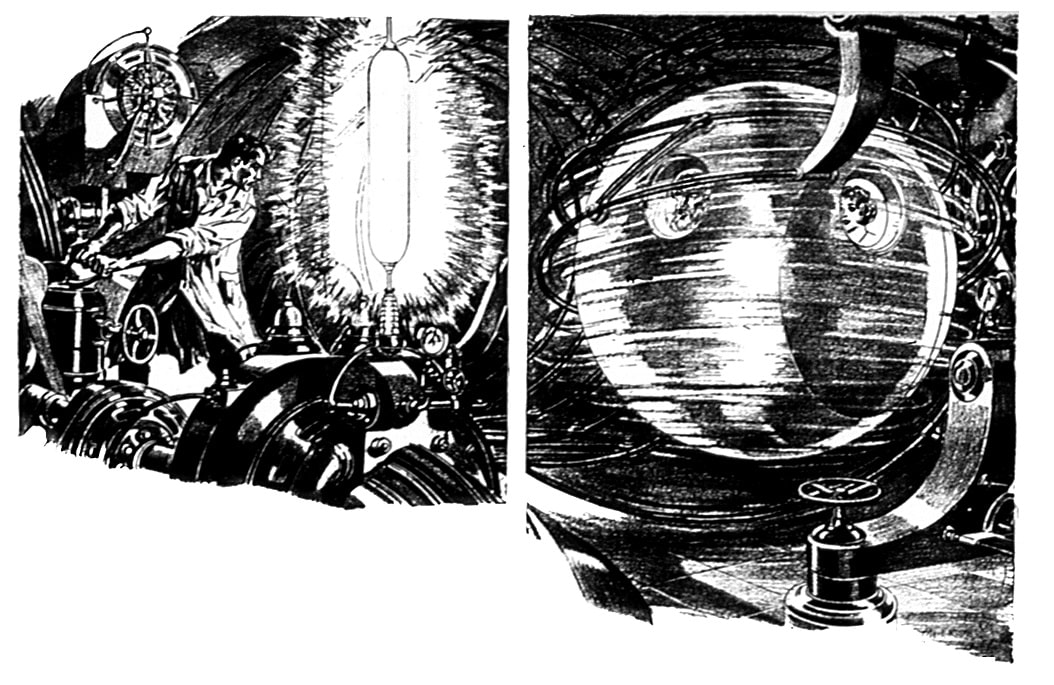
This sounds right up my alley – much as I honor Campbell’s contribution, the music I most like to march to comes from those good old Gosh-Wow pulps. Leigh Brackett said somewhere (I think in the Best of Planet Stories anthology that she edited) that if she had had to rely only on her sales to Campbell, she would have starved. I for one am very glad that she didn’t!
I love Knight as a critic – he wasn’t always right (which just means that he doesn’t always agree with ME), but he was never dull, and whenever I want to roar with laughter at a gleeful demolition (that I agree with) or get in a good fight over a hatchet job (that I disagree with), I pull In Search of Wonder off the shelf.
Unrelated to this article(good read though) but are you still looking for a copy of Weird Tales Winter 1985? A friend of mine found one at a estate sale along with the Fall 1984 issue. In a June 2019 article you said to email if one was found but I was unable to find your email.
Chase,
You have a very impressive memory! I didn’t even remember that article.
Thank you for letting me know. Enormously gracious of you to keep that comment in mind for five long years, and contact me when you heard about a copy. I’m no longer actively acquiring Weird Tales, and in fact at this stage I’m slowly selling off parts of my collection to make it more manageable.
Nonetheless, I think congratulations are in order for your friend. I’ve never even seen a copy of the Winter 1985 issue of Weird Tales, and to find one (and the Fall 1984 issue!) at an estate sale is good fortune of the first water. I tip a glass in salute!
I remember getting this when it was offered by the Science Fiction Book Club (how I miss them). I had been a member only a few months but I had already gotten a copy of Asimov’s Before the Golden Age through the club and loved it so getting Knight’s anthology was a no-brainer. What I really loved about it was it included the original illustrations from the pulps. Good times.
Mark,
The Science Fiction Book Club still exists! I’m still a member. In fact, they picked up my novel The Robots of Gotham, and I will admit that I couldn’t resist ordering a copy just to have it delivered in SFBC packaging. My inner 12-year old was giddy for days when THAT arrived, I can tell you. 🙂
Many years ago now(!) I actually made my own personal letterhead stationery, featuring a miniaturized version of that same (awesome) illustration from “The Mad Moon” — from my Science Fiction Book Club copy of this anthology!!
John,
That’s awesome! Clearly I should have been writing you more letters in those days. Back when you and I were exchanging letters (roughly 1977-81?) we talked mostly about Jack KIrby and Space:1999!